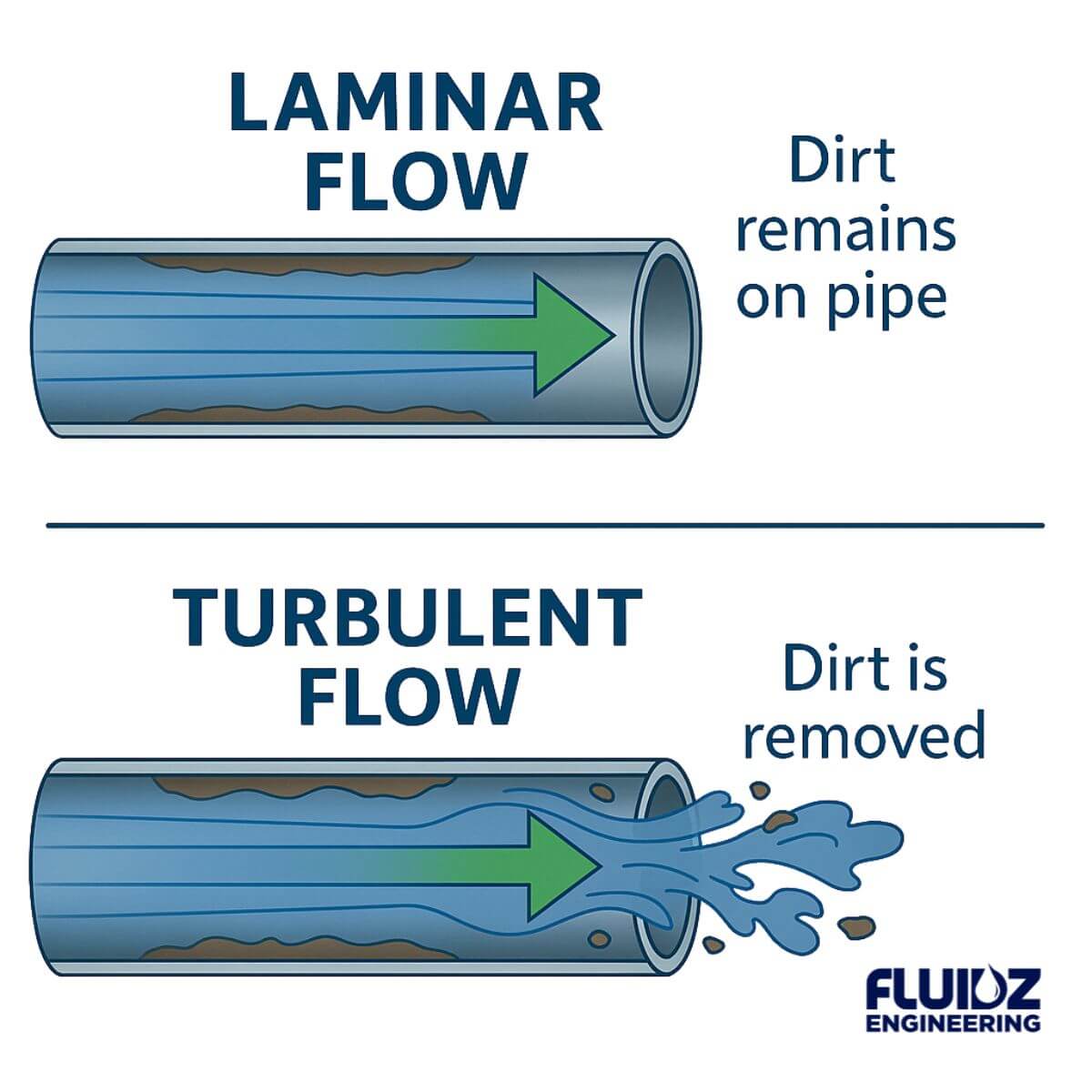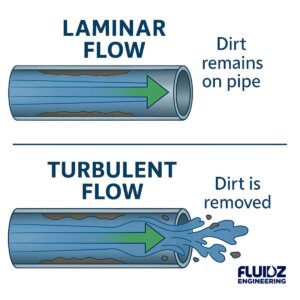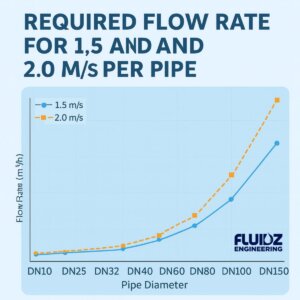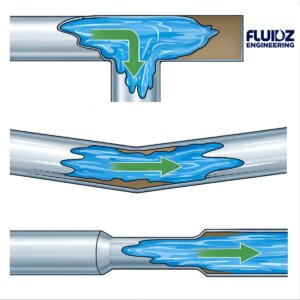
Optimal CIP Cleaning 1: Hygienic design
15 August 2025
Today we start with the 10 basic ingredients of optimal CIP cleaning!
Ingredient 1: The hygienic design
An hygienic design of a process installation is designed in accordance with the EHEDG guidelines.
Why is this important?
A food production installation must be able to be cleaned properly.
Visibly and invisibly.
Therefore, it is important to apply the following design rules:
- Pipe velocity during cleaning: 1.5 – 2 m/s (=turbulent flow)
Tip: Note that velocities during cleaning are higher than during production- Figure Pipe flow: – Figure Pipe velocity:


- Avoid pipe branches
Tip: Use flow-through branches (swept tees) instead of standard tees to improve cleaning. (<1.5D)- Figure Pipe dimensions:

- Avoid dips in the pipework, as dips increase the risk of bacterial growth and corrosion
Tip: Pay attention to pipe support
- Avoid diameter changes
Tip: If a diameter change is unavoidable, use gradual, conical transitions instead of abrupt transitions.
Use eccentric transitions in the horizontal plane.
- Avoid combining line and tank cleaning, as tank and line cleaning often have different flow, pressure, and cleaning time requirements
Tip: Design separate circuits for tanks and pipes
- Design the pipework to be fully drainable by means of a slope and, if necessary, drain points
Tip: Design pipes with a slope to drain points (0.5–1%)
- Ensure good full flow and drainability of pumps and heat exchangers
Tip: Choose pumps and heat exchangers with hygienic design certifications (EHEDG, 3-A)
- Know the (cleaning) specifications of the equipment (cleaning flow or pressure) and adjust the piping accordingly
Tip: Record these values in the validation protocol
This information, along with additional explanations, will soon be available on the FAQ page of our website.
Next week, we’ll explain ingredient 2: Material selection.
